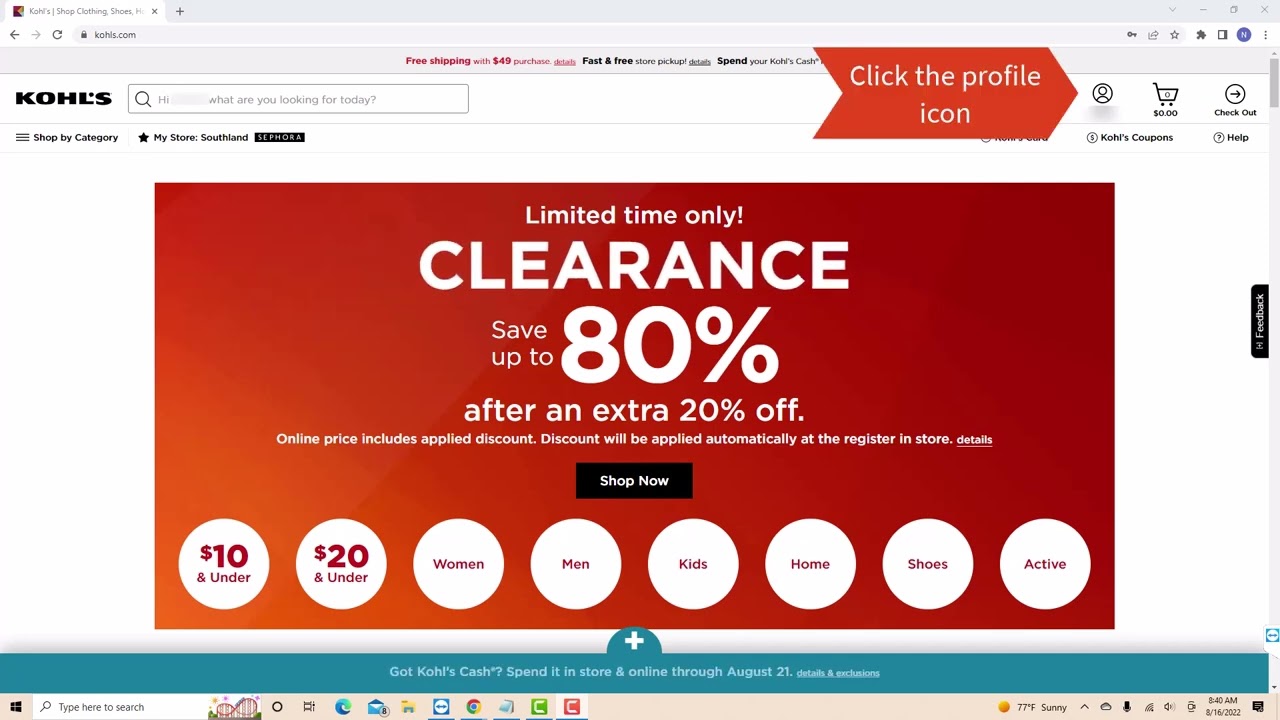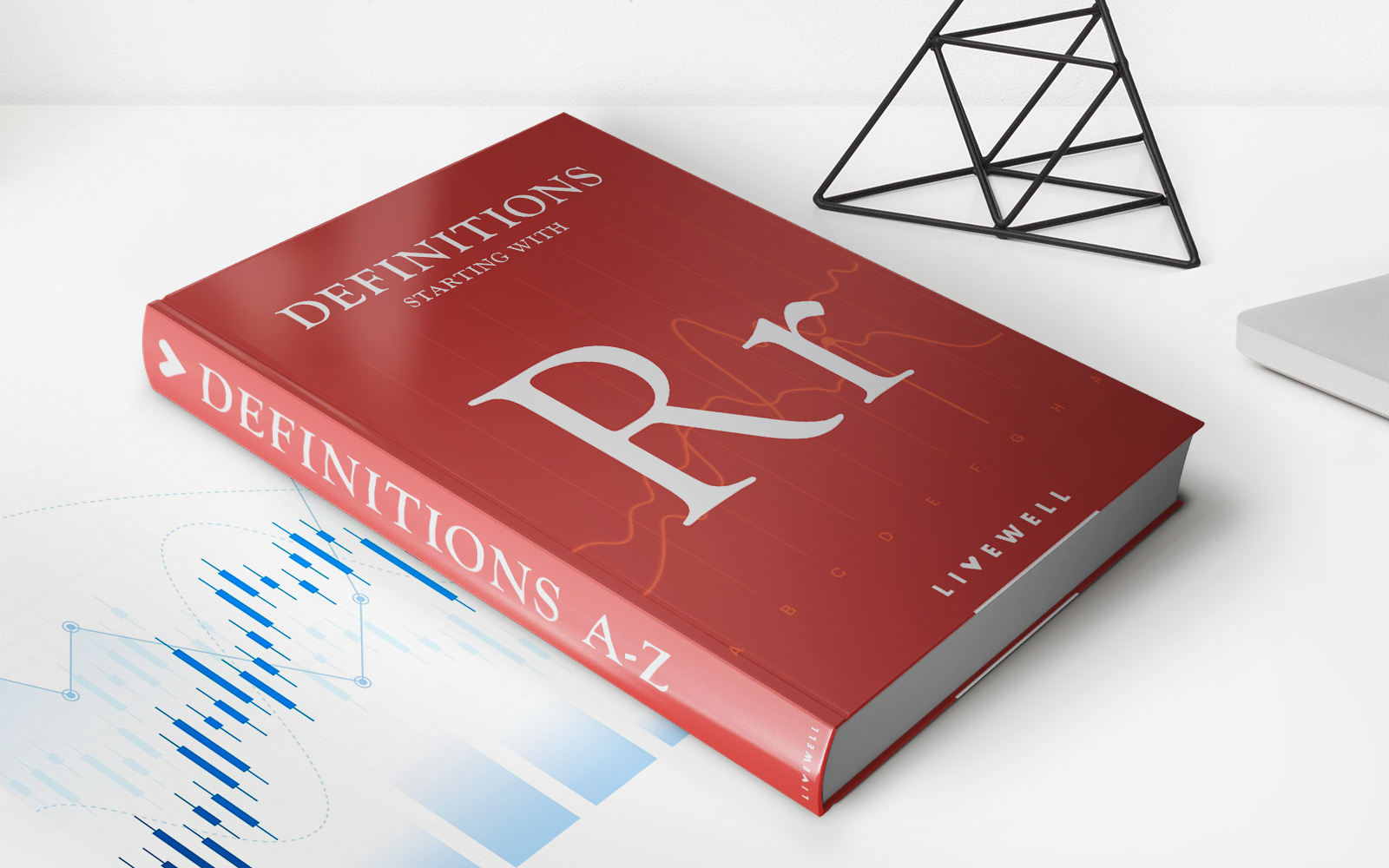

Finance
What Is EOI For Life Insurance?
Modified: December 29, 2023
Learn about the concept of EOI for life insurance and its impact on your personal finances. Discover how it can protect your financial future.
(Many of the links in this article redirect to a specific reviewed product. Your purchase of these products through affiliate links helps to generate commission for LiveWell, at no extra cost. Learn more)
Table of Contents
Introduction
When it comes to securing financial stability and protecting loved ones, life insurance plays a vital role. It provides a safety net that can help cover expenses and provide financial support in the event of a policyholder’s death. However, the traditional process of obtaining life insurance often involves lengthy applications, medical exams, and underwriting to determine eligibility.
Fortunately, there is an alternative option known as Evidence of Insurability (EOI) that simplifies the application process for certain individuals. EOI allows individuals to apply for life insurance coverage without undergoing medical exams or providing extensive medical history. Instead, it focuses on determining the applicant’s insurability based on their current health status and lifestyle.
EOI is a convenient option for those who want to secure life insurance coverage quickly and easily. In this article, we will explore EOI for life insurance in detail, including its importance, application process, eligibility criteria, benefits, and drawbacks. Additionally, we will compare EOI with the traditional life insurance application process and provide some helpful tips for a successful EOI application.
Whether you are a young professional, a parent, or a retiree, understanding EOI in the context of life insurance will empower you to make informed decisions about protecting yourself and your loved ones financially.
Understanding EOI
Evidence of Insurability (EOI) is a process used by insurance companies to evaluate an individual’s risk and determine their eligibility for life insurance coverage. Traditionally, life insurance applications require applicants to undergo a comprehensive medical examination, disclose their medical history, and provide detailed information about their lifestyle choices.
However, EOI streamlines the application process by eliminating the need for medical exams and extensive documentation. Instead, insurance companies rely on a simplified assessment of an applicant’s current health status and lifestyle to determine their insurability.
EOI typically involves answering a series of health-related questions that assess an individual’s overall health, including pre-existing medical conditions, history of chronic illnesses, and lifestyle choices such as smoking or participation in hazardous activities. The purpose of these questions is to provide the insurance company with enough information to evaluate the applicant’s risk profile and determine the appropriate coverage and premium.
It is important to note that EOI is not available for all types of life insurance policies. It is typically offered for group life insurance plans or as a supplemental option for existing policyholders who wish to increase their coverage without undergoing a new medical examination.
The concept behind EOI is to provide individuals with an efficient and simplified process for obtaining life insurance coverage. By removing the need for medical exams and extensive documentation, EOI allows individuals to secure coverage more quickly and easily, making it an attractive option for those who have limited time or prefer a hassle-free application process.
However, it is important to understand that EOI does not guarantee automatic approval for life insurance coverage. Insurance companies still evaluate the risk associated with each applicant based on the information provided. It is possible to be denied coverage or be offered coverage at a higher premium if the assessment determines that the applicant has a higher risk profile.
Overall, EOI provides a convenient alternative to the traditional life insurance application process, allowing eligible individuals to secure coverage more efficiently. In the next sections, we will delve deeper into the importance of EOI in life insurance and the process of applying for EOI coverage.
Importance of EOI in Life Insurance
EOI plays a crucial role in the realm of life insurance, offering several important benefits for both insurance companies and applicants. Understanding the significance of EOI can help individuals make informed decisions about their life insurance coverage. Here are some key reasons why EOI is important in the context of life insurance:
- Simplified Application Process: EOI simplifies the application process for life insurance coverage. By eliminating the need for medical exams and extensive documentation, it saves applicants time and effort.
- Quick Coverage: With EOI, eligible individuals can secure life insurance coverage more quickly. Traditional life insurance applications can often take weeks or even months to process, whereas EOI allows for faster approval and coverage initiation.
- Accessibility: EOI makes life insurance more accessible to a wider range of individuals. It removes potential barriers, such as medical conditions or lifestyle choices, that may have otherwise made it difficult to obtain coverage through traditional means.
- Convenience: EOI offers convenience for individuals who require immediate life insurance coverage. This can be especially beneficial for those who experience major life events, such as getting married, having a child, or buying a home, and need coverage promptly.
- Flexibility: EOI provides flexibility by offering an alternate pathway to secure life insurance coverage. It allows individuals to apply for coverage without having to go through the extensive medical examination and documentation process, making it appealing for those who prefer a simpler application method.
- Supplemental Option: EOI is often offered as a supplemental option within existing life insurance policies. This allows policyholders to increase their coverage without having to reapply or go through another round of medical exams.
While EOI offers many advantages, it is essential to note that it may not be suitable for everyone. Individuals with complex medical histories or high-risk profiles may still be required to undergo the traditional application process. Additionally, the coverage offered through EOI may have certain limitations and exclusions compared to traditional life insurance policies.
Despite these considerations, EOI plays a significant role in making life insurance more accessible and convenient, ensuring that individuals have the opportunity to protect themselves and their loved ones financially. In the next sections, we will explore the process of applying for EOI coverage and the eligibility criteria that applicants must meet.
Process of EOI Application
The process of applying for EOI coverage is generally straightforward and streamlined compared to traditional life insurance applications. Let’s take a closer look at the typical steps involved in the EOI application process:
- Initial Inquiry: The first step is to express interest in obtaining life insurance coverage through the EOI process. This can be done by contacting an insurance company directly or through your employer if you have access to group life insurance plans.
- Information Gathering: Once your interest is established, you will be required to provide relevant personal information, such as your name, age, contact details, and any existing health conditions. The insurance company may also ask about your lifestyle choices, such as smoking or participating in hazardous activities.
- Health and Risk Assessment: Based on the information provided, the insurance company will assess your health and risk profile to determine your insurability. This assessment is typically done internally by the insurance company or through a third-party provider specializing in underwriting services.
- Underwriting Decision: After evaluating your risk profile, the insurance company will make an underwriting decision. You may be approved for coverage, offered coverage at a higher premium rate, or, in some cases, denied coverage due to a high-risk profile.
- Offer and Acceptance: If you are approved for coverage, the insurance company will provide you with details about the coverage options available and the associated premiums. You can review the offer, ask any questions, and ultimately decide whether to accept the offer.
- Enrollment and Payment: Once you accept the offer, you will need to complete the necessary enrollment forms and make the premium payment as specified by the insurance company. It is important to carefully review the terms and conditions of the policy before signing and submitting the enrollment forms.
- Coverage Initiation: Upon receiving the enrollment forms and premium payment, the insurance company will initiate your coverage. This means that you are officially protected under the terms of the policy, and your beneficiaries will be entitled to the designated death benefit in the event of your passing.
It’s important to note that the specific steps and requirements may vary slightly depending on the insurance company and the type of coverage you are applying for. Some insurance companies may also offer an online application process, making it even more convenient to apply for EOI coverage.
Additionally, keep in mind that EOI coverage may have certain restrictions, such as a maximum coverage amount or a waiting period before certain benefits become effective. Be sure to review the terms and conditions of the policy thoroughly to understand the coverage details and any limitations.
In the next section, we will discuss the eligibility criteria for EOI coverage, helping you determine whether you meet the necessary requirements.
EOI Eligibility Criteria
While EOI provides a simplified and convenient application process for life insurance coverage, there are certain eligibility criteria that individuals must meet to qualify for this option. These criteria vary depending on the insurance company and the specific policy being applied for. Here are some common factors considered in EOI eligibility:
- Age: Insurance companies typically have age restrictions for EOI coverage. These restrictions can vary, but most commonly, EOI is available for individuals between the ages of 18 and 65.
- Employment Status: EOI is often offered as part of group life insurance plans provided by employers. Therefore, eligibility for EOI coverage may depend on your employment status. It is common for individuals who participate in employee benefits programs to qualify for EOI coverage.
- Health Status: While EOI does not require a medical exam, insurance companies may still assess an applicant’s health status based on the information provided. This typically includes questions about pre-existing medical conditions, chronic illnesses, and recent hospitalizations.
- Lifestyle Choices: Insurance companies may inquire about certain lifestyle choices that could impact the risk profile of an applicant. These factors may include smoking, participation in hazardous sports or activities, and travel to high-risk countries.
- Policy Limits: EOI coverage may have certain limits or restrictions, such as a maximum coverage amount or specific benefit exclusions. These limits can vary depending on the insurance company and the policy being applied for. It is important to review the policy details to understand any limitations.
It is crucial to provide accurate and truthful information while completing the EOI application. Any misrepresentation or failure to disclose relevant details could result in the denial of coverage or cancellation of the policy in the future.
It’s important to note that meeting the eligibility criteria does not guarantee automatic approval for EOI coverage. Insurance companies still evaluate individual risk profiles and may offer coverage at a higher premium or deny coverage based on their underwriting assessment.
If you do not meet the eligibility criteria for EOI coverage, it may be necessary to explore alternative options for obtaining life insurance. Traditional life insurance applications, which involve medical exams and full underwriting, may be necessary to secure coverage in these cases.
In the next section, we will discuss the benefits and drawbacks of EOI in more detail to help you make an informed decision about whether EOI is the right option for your life insurance needs.
Benefits and Drawbacks of EOI
EOI for life insurance offers several benefits that make it an appealing option for many individuals. However, it is important to consider both the advantages and drawbacks before opting for EOI coverage. Here are the benefits and drawbacks of EOI:
Benefits of EOI:
- Simplified Application Process: EOI eliminates the need for medical exams and extensive documentation, making the application process quicker and more convenient.
- Efficiency: EOI provides a faster option for obtaining life insurance coverage compared to traditional applications, which can take weeks or even months to process.
- Accessibility: EOI makes life insurance more accessible to individuals who may have difficulty obtaining coverage through traditional means, such as those with pre-existing conditions or complex medical histories.
- Flexibility: EOI can be used to secure additional coverage or increase coverage amounts without undergoing a new medical examination.
- Convenience: The streamlined EOI process saves applicants time and effort by allowing them to secure life insurance coverage more easily, making it a convenient option.
Drawbacks of EOI:
- Higher Premiums: EOI coverage may come with higher premium rates compared to traditional life insurance policies. This is because the lack of extensive medical underwriting could result in a higher perceived risk by the insurance company.
- Limitations and Exclusions: EOI policies may have certain limitations and exclusions, such as a waiting period before certain benefits become effective or maximum coverage limits. It is crucial to review the policy details carefully to understand any restrictions.
- Limited Coverage Options: EOI may not offer the same range of coverage options as traditional life insurance policies. This means that individuals with specific coverage needs may find their options limited when choosing EOI coverage.
- Risk Assessment: While EOI does not require a medical exam, insurance companies still assess an applicant’s health and risk profile based on the information provided. This means that there is still a possibility of being denied coverage or offered coverage at a higher premium due to a perceived increased risk.
Considering these benefits and drawbacks will help you determine if EOI is the right choice for your life insurance needs. It’s important to weigh the convenience and accessibility of EOI against the potential limitations and cost implications. If EOI aligns with your requirements and financial situation, it can be an efficient way to obtain life insurance coverage.
In the next section, we will compare EOI with the traditional life insurance application process to help you make an informed decision about which option is best suited for you.
EOI vs. Traditional Life Insurance Application
When it comes to obtaining life insurance coverage, individuals have the option to choose between EOI and the traditional life insurance application process. Understanding the differences between these two options can help you decide which approach is most suitable for your needs. Here is a comparison of EOI and the traditional life insurance application:
EOI:
– Application Process: EOI offers a simplified application process, eliminating the need for medical exams and extensive documentation. It typically involves answering health-related questions to assess eligibility.
– Speed: EOI allows for quicker coverage initiation compared to traditional applications, which can take weeks or months to process.
– Accessibility: EOI makes life insurance more accessible, particularly for individuals with pre-existing conditions or complex medical histories.
– Convenience: The streamlined EOI process saves time and effort for applicants who prefer a hassle-free application.
– Flexibility: EOI can be used as a supplemental option to increase existing coverage, without requiring a new medical examination.
Traditional Life Insurance Application:
– Medical Exams and Documentation: Traditional applications typically require applicants to undergo comprehensive medical exams, disclose detailed medical history, and provide extensive documentation.
– Underwriting: Traditional applications involve thorough underwriting processes, assessing the applicant’s health, lifestyle, and potential risk factors in greater detail.
– Processing Time: Traditional applications have longer processing times due to the need for medical exams and underwriting analysis.
– More Coverage Options: Traditional life insurance often offers a wider range of coverage options, allowing individuals to choose the specific policy that best suits their needs.
– Potential Cost Savings: Depending on the individual’s health profile, traditional applications may result in lower premiums compared to EOI coverage.
Understanding these differences allows individuals to make an informed decision based on their preferences, time constraints, health history, and coverage needs. EOI is often favored by those seeking a simplified and convenient application process, while the traditional method may be preferable for those who prioritize a broader range of coverage options or potential cost savings.
It’s important to weigh the benefits and limitations of each approach, considering factors such as eligibility, processing time, coverage options, and associated costs. Making a well-informed choice ensures that you obtain the life insurance coverage that best fits your requirements and provides the necessary financial protection for you and your loved ones.
In the next section, we will provide some helpful tips for a successful EOI application to increase your chances of obtaining coverage smoothly.
Tips for a Successful EOI Application
While applying for life insurance coverage through EOI offers a simplified process, it’s still important to approach it strategically to increase your chances of a successful application. Here are some tips to help you navigate the EOI application process:
- Ensure Accurate and Honest Information: Provide accurate and honest information when answering the health-related questions in the EOI application. Misrepresentation or omission of information could result in the denial of coverage or future complications.
- Review Eligibility Requirements: Familiarize yourself with the eligibility requirements for EOI coverage. Make sure you meet the age and employment criteria set by the insurance company or employer offering the coverage.
- Prepare Relevant Medical Information: Before beginning the application, gather any relevant medical information that may assist in accurately answering the health-related questions. This may include details of pre-existing conditions, recent doctor visits, or hospitalizations.
- Read and Understand the Policy: Carefully review the terms and conditions of the policy before accepting the offer. Pay attention to any limitations, exclusions, or waiting periods associated with the coverage.
- Seek Clarification: If you have any questions or uncertainties regarding the EOI application or coverage, don’t hesitate to reach out to the insurance company or employer offering the coverage. Clearing any doubts beforehand can help avoid potential issues later on.
- Submit Complete Application: Ensure that you fill out the EOI application form completely and accurately. Incomplete or inconsistent information may cause delays or complications in the underwriting process.
- Keep Communication Channels Open: Maintain open lines of communication with the insurance company or designated contact throughout the application process. Promptly respond to any requests for additional information or clarification.
- Follow-up Regularly: Stay proactive by periodically following up on the status of your EOI application. This shows your interest, keeps you informed, and allows you to address any potential issues promptly.
- Consider Professional Advice: If you have concerns or complexities related to your health history or coverage needs, consider consulting with a licensed insurance professional who can provide guidance and help navigate the EOI application process.
By following these tips, you can increase the likelihood of a successful EOI application. Remember, the goal is to provide accurate and complete information while understanding the terms and conditions of the coverage.
In the next section, we will address some frequently asked questions about EOI in life insurance to provide further clarity and address common concerns.
FAQs about EOI in Life Insurance
Here are some frequently asked questions about EOI in the context of life insurance:
1. What is the main difference between EOI and traditional life insurance applications?
EOI eliminates the need for medical exams and extensive documentation, focusing on assessing an applicant’s current health status and lifestyle. Traditional life insurance applications involve comprehensive medical underwriting and may require medical exams and detailed medical history disclosure.
2. Does EOI guarantee automatic approval for coverage?
No, EOI does not guarantee automatic approval. Insurance companies still assess an applicant’s risk profile based on the information provided and may offer coverage at a higher premium or deny coverage if the risk is deemed too high.
3. Can EOI coverage be used as stand-alone life insurance?
EOI coverage is often offered as a supplemental option for existing policyholders or through group life insurance plans. It may not always be available as a stand-alone life insurance policy.
4. Are EOI premiums typically higher compared to traditional life insurance?
EOI coverage may come with higher premium rates compared to traditional life insurance. This is because the simplified assessment process may result in a higher perceived risk for the insurance company.
5. What if I have a complex medical history or pre-existing condition?
EOI may still be an option for individuals with complex medical histories or pre-existing conditions. It is important to accurately disclose your medical information and let the insurance company assess your eligibility.
6. Can I convert my EOI coverage to a traditional life insurance policy?
Conversion options vary by insurance companies and policy terms. Some policies may offer a conversion option, allowing individuals to convert their EOI coverage into a traditional life insurance policy at a later date.
7. Is there a waiting period for EOI coverage to become effective?
Some EOI policies may have a waiting period before certain benefits become effective. It is important to review the policy terms to understand any waiting periods or limitations.
8. Can I apply for EOI coverage outside of my employer’s group life insurance plan?
EOI coverage availability may vary depending on the insurance company and the policy type. While it is commonly offered through employer-sponsored group plans, some insurance companies may offer EOI options for individuals outside of group plans.
9. Can I increase my EOI coverage at a later date?
Depending on the policy terms, it may be possible to increase your EOI coverage at a later date. This often involves submitting a new application or completing a supplemental enrollment form.
10. How long does the EOI application process typically take?
The EOI application process can vary, but it generally takes less time compared to traditional applications. Depending on the insurance company’s processing time and any additional requirements, it can take anywhere from a few days to a couple of weeks.
These FAQs provide basic information about EOI in life insurance. If you have specific concerns or questions, it is best to contact the insurance company or a licensed insurance professional for personalized guidance and clarification.
In the concluding section, we will summarize the key points discussed and emphasize the importance of carefully considering your options when choosing between EOI and traditional life insurance.
Conclusion
Obtaining life insurance coverage is a crucial step in securing financial protection for yourself and your loved ones. Evidence of Insurability (EOI) offers a simplified and convenient alternative to the traditional life insurance application process. While EOI eliminates the need for medical exams and extensive documentation, it still requires applicants to provide accurate health and lifestyle information.
EOI provides several benefits, including a streamlined application process, quick coverage initiation, accessibility for individuals with pre-existing conditions, and flexibility to enhance existing coverage. However, there are also drawbacks to consider, such as potentially higher premiums, coverage limitations, and the need for accurate risk assessment based on the provided information.
Comparing EOI to traditional life insurance applications, the latter involves more comprehensive underwriting, medical exams, and extensive documentation. Traditional applications may provide a wider range of coverage options and potential cost savings for individuals with favorable health profiles. However, they often require more time and effort to complete.
When deciding between EOI and traditional life insurance, carefully consider your eligibility, coverage needs, time constraints, and the level of convenience you desire. Evaluate the benefits and drawbacks of each option to make an informed decision that aligns with your financial goals and personal circumstances.
Remember, while EOI provides a simplified application process, it is still essential to provide accurate and honest information and understand the terms of the coverage. Seeking professional advice and guidance can be beneficial, especially if you have complex medical conditions or concerns about coverage options.
By understanding the importance of EOI, the application process, eligibility criteria, benefits, drawbacks, and tips for a successful application, you can confidently navigate the world of life insurance and make choices that protect your financial well-being and provide peace of mind.














